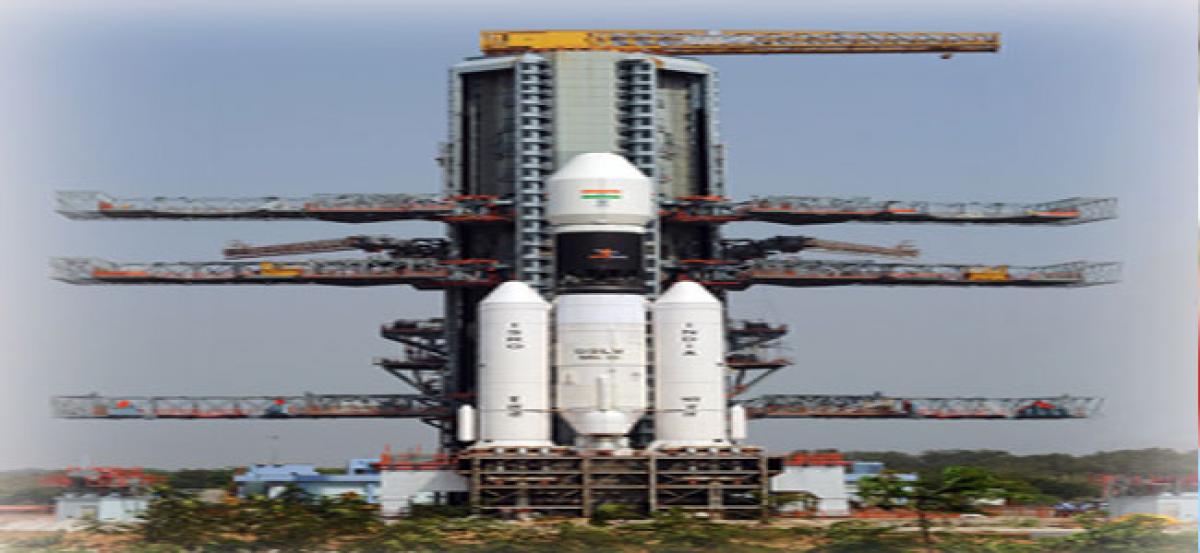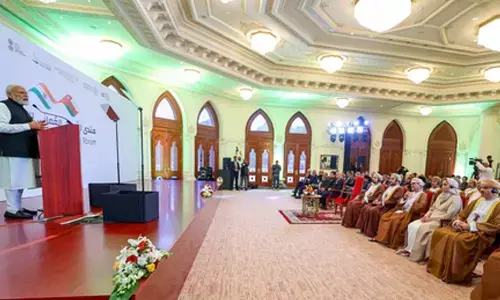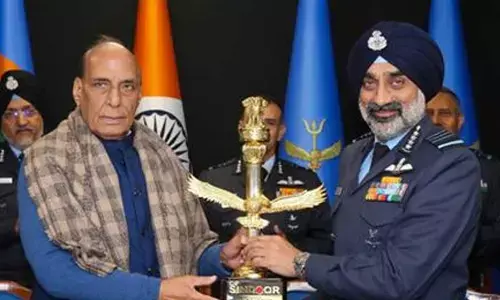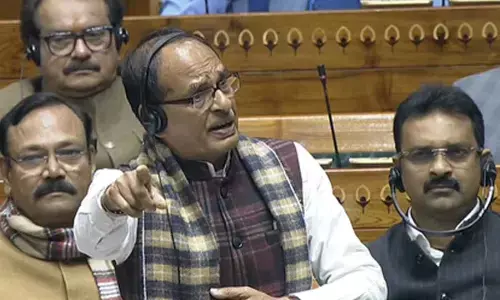Geosynchronous Satellite Launch Vehicle Mark III launch today

The Indian Space Research Organisation (ISRO) is set to launch a heaviest rocket, Geosynchronous Satellite Launch Vehicle Mark III (GSLV Mk III) that would be able to take humans into space, officials said on Sunday. The heavy-lift GGSLV Mark III rocket would also open up opportunities for India to launch 4-ton class of satellites of foreign countries, according to a senior space scientist.
To open up 4-ton satellite launch market for India
Nellore: The Indian Space Research Organisation (ISRO) is set to launch a heaviest rocket, Geosynchronous Satellite Launch Vehicle Mark III (GSLV Mk III) that would be able to take humans into space, officials said on Sunday. The heavy-lift GGSLV Mark III rocket would also open up opportunities for India to launch 4-ton class of satellites of foreign countries, according to a senior space scientist.
The 25-and-a-half-hour countdown for the first developmental flight, carrying communication satellite GSAT-19, began at 3.58 pm on Sunday. It is scheduled to lift off from Satish Dhawan Space Centre in Sriharikota at 5.28 pm on Monday.
The mission readiness review (MRR) committee and launch authorisation board (LAB) cleared the countdown for the mission on Friday.
Monday's launch of the first developmental flight of the rocket is a "great milestone" as ISRO is almost doubling the capacity to launch satellite from 2.2-2.3 tons to 3.5-4 tons, former ISRO Chairman K Radhakrishnan said. "Today if India has to launch communication satellites beyond 2.3 tons, we have to go abroad (to launch them).
We (will) have self-reliance in launching communication satellites (once GSLV Mk III becomes operational), and also we will be able to attract foreign customers," he said. "It's rather a simpler vehicle, and a vehicle with better payload fraction. And it's going to be future workhorse vehicle (of ISRO)," he said.
Radhakrishnan was closely associated with the GSLV Mk III programme, approved in 2000, as director of VSSC (Vikram Sarabhai Space Centre) and then chairman of Indian Space Research Organisation (ISRO). He is now an adviser to ISRO. "We are getting into the next level of capacity. Polar Satellite Launch Vehicle is a stable line at the moment.
GSLV is better than that. Here we are getting into a vehicle which is going to be more cost-effective. "And there is a lot of opportunity to launch communication satellites of India as well those of other countries because 4-ton is a good range for communication satellites," he said.
"It should open up (international market for ISRO). After a couple of developmental flights to establish, I am sure there will be opportunities for launching even foreign communication satellites," Radhakrishnan said. GSLV Mk III can launch normal communication satellites that are in the market.
"If you look at the global communication satellite scenario, it has gone up to 6 to 6.5 tons at the moment... that's the high power satellite but much of the volume is used for...and mass also for propellants for keeping long life of satellite."If the satellites switch over to electric propulsion from chemical propulsion, the mass could be kept at 4-ton level. From that scenario, GSLV has a long operational life and there are opportunities for launching communication satellites of India and other countries," he said.
"Comparable vehicle (for GSLV Mk III) today is Ariane-6 which is getting developed in Europe. That's for about 6.5 tons. Once chemical propulsion of the satellites is replaced by the electric propulsion for which work is going on, then they will also come down in mass. "GSLV Mk III will be a candidate for them (foreign customers) to consider. Mass is an issue for communication satellites. People are trying to bring in electric propulsion," the eminent scientist said.

















